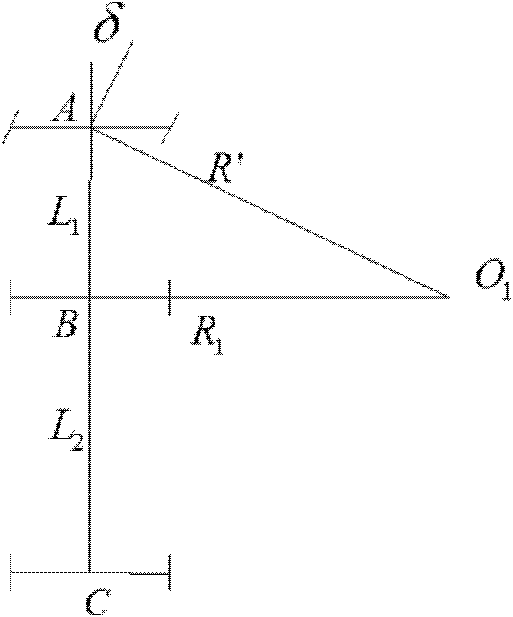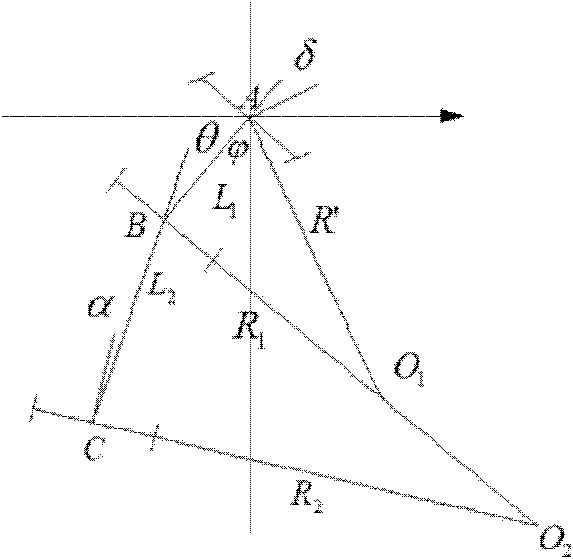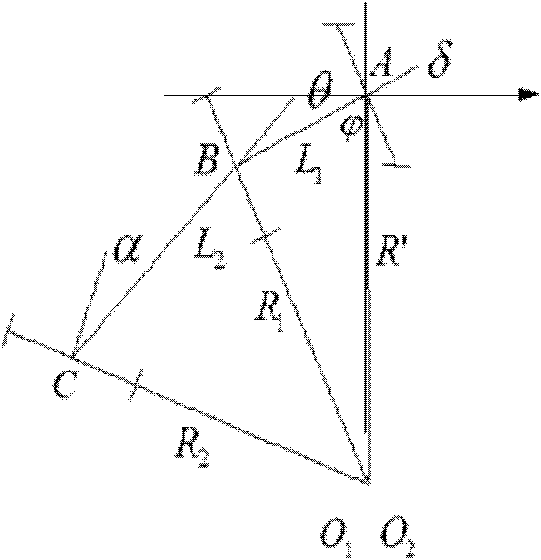Method for determining passageway distance of port road on the basis of two-dimensional cellular automaton model
A technology of automaton model and two-dimensional cells, which is applied in roads, roads, buildings, etc., can solve problems such as simulation performance and deviation of research conclusions, and achieve the effect of improving accuracy
- Summary
- Abstract
- Description
- Claims
- Application Information
AI Technical Summary
Problems solved by technology
Method used
Image
Examples
Embodiment Construction
[0044] Because the model of large vehicle entering and exiting the entrance is similar, the present invention takes tractor-semi-trailer and unsignal entrance and exit as examples for illustration.
[0045] (1) Large vehicles drive out of the entrance and exit track
[0046] figure 1 , 2 , 3 is a schematic diagram of the entrance and exit of a large vehicle. Figure A is the midpoint of the front axle of the tractor, B is the hinge point between the tractor and the semi-trailer, and C is the midpoint of the rear axle of the semi-trailer. The instant center of rotation of the tractor is O 1 , the instantaneous center of rotation of the semi-trailer is O 2 , R 1 , R 2 are the turning radii of the tractor and the semi-trailer respectively, and the speed at point B is V B , L 1 is the wheelbase of the tractor, L 2 is the distance from the axle of the semi-trailer to the traction pin, δ is the steering angle of the tractor, θ is the knuckle angle of the tractor, and α is t...
PUM
 Login to View More
Login to View More Abstract
Description
Claims
Application Information
 Login to View More
Login to View More - R&D
- Intellectual Property
- Life Sciences
- Materials
- Tech Scout
- Unparalleled Data Quality
- Higher Quality Content
- 60% Fewer Hallucinations
Browse by: Latest US Patents, China's latest patents, Technical Efficacy Thesaurus, Application Domain, Technology Topic, Popular Technical Reports.
© 2025 PatSnap. All rights reserved.Legal|Privacy policy|Modern Slavery Act Transparency Statement|Sitemap|About US| Contact US: help@patsnap.com



